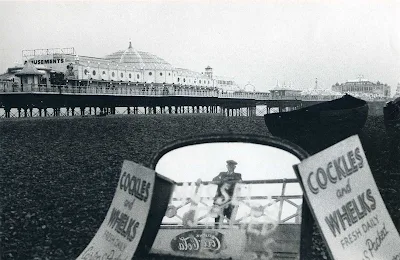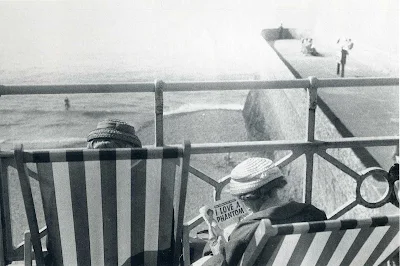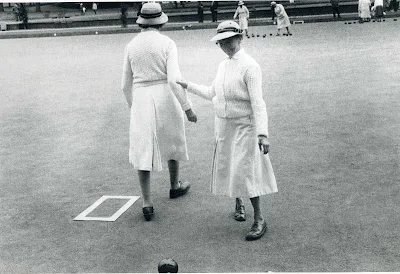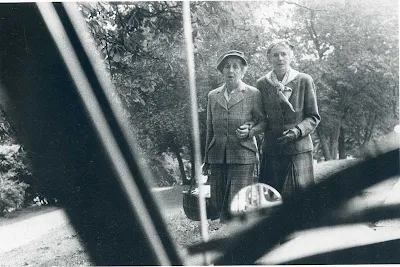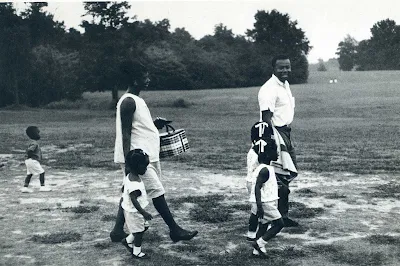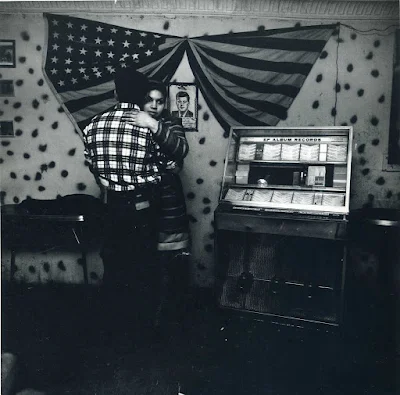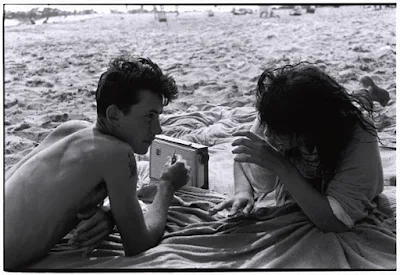Bruce Davidson was
born in Oak Park, Ill., where his prolific career began at the tender age of 10
when his mother built him a dark room. He spent his adolescence photographing
different neighborhoods in Chicago. This photograph was taken in Queens, N.Y.,
in 1980.
Drive-Through. After
graduating from high school, Davidson entered Rochester Institute of Technology
and Yale University. This photograph was made in Los Angeles in 1964 and was
famously used for the cover of the Beastie Boys' triple-platinum album Ill
Communication.
Child's Play. After college, Davidson enlisted in the Army; at his
first station, he was assigned to the base's photo pool. In this photo, a girl
pushes a baby carriage down a factory road in Wales.
Dining Out. His talent as a photographer was recognized by an
editor of the post's newspaper, and Davidson was asked to be permanently
assigned to the paper, where he was given a certain amount of autonomy. In the
above shot, an elderly couple eats in a New York cafeteria in 1973.
During these golden
years he photographed extensively, taking photos of two of his famous projects,
“Brooklyn Gang” – a project on
troubled teenage youth in the area and “The
Dwarf” – a circus-dwarf named Jimmy Armstrong that he befriended which
showed the various levels of emotional complexity that Jimmy faced as a
performer.
Circus. Not long after, Davidson was stationed in Paris,
where he met the famed photographer Henri Cartier-Bresson, a founder of the
storied Magnum photo agency. Above, a circus dwarf is photographed in
Palisades, N.J., in 1958.
Portrait. In this photo, two people pose for a portrait in
Alabama in 1965.
From 1961 to 1965,
Davidson produced one of his most famous bodies of work, “Time of Change” in which he followed the Civil Rights Movement and
Freedom Riders around the United States, in both the North and South. This
project awarded him the first National Endowment for the Arts grant ever given to
a photographer.
Davidson’s next
project, “East 100th Street” is
probably his most famous bodies of work, in which he photographed an infamously
run-down block in East Harlem for two years. Using a 4×5 large-format view
camera, he befriended many of the locals and constantly gave out prints from
the project that he worked on. Through the project you get a very intimate look
into the lives of people in East 100th Street – both the difficulties they
faced as well as the joys.
Looking Out. In 1998, the photographer returned to East 100th
Street to document the changes that had occurred in the 30 years since his
seminal work documenting the neighborhood.
Lean on Me. Two kids sit on a sofa in a New York City apartment
in 1966. This photo is taken from Davidson's series East 100th Street, the
result of his spending two years documenting the people inhabiting the East
Harlem street.
To create a
memorable street photograph is a combination of content & form. We want
strong content (capturing interesting people, scenes, situations) and strong
form (composition, framing, backgrounds). Although both are important, Davidson
says that his photographs revolve more around the content by capturing moods: “From the start, my photographs were about
capturing a mood. I didn’t do picture stories; it was more about taking a
picture that caught a mood, then building a series that sustained that mood.”
March to Freedom. After briefly working as a freelance photographer,
Davidson joined Magnum in 1958. Above, a group of civil rights demonstrators
led by Martin Luther King Jr. marches from Selma to Montgomery, Ala., during
the civil rights movement.
«Οι
περισσότερες από τις φωτογραφίες μου είναι συμπονετικές, ευγενικές και
προσωπικές. Τείνουν να επιτρέπουν στο θεατή να δει μόνος του. Και τείνουν να
μην παρουσιάζονται ως τέχνη.» Μπρους Ντάβιντσον














